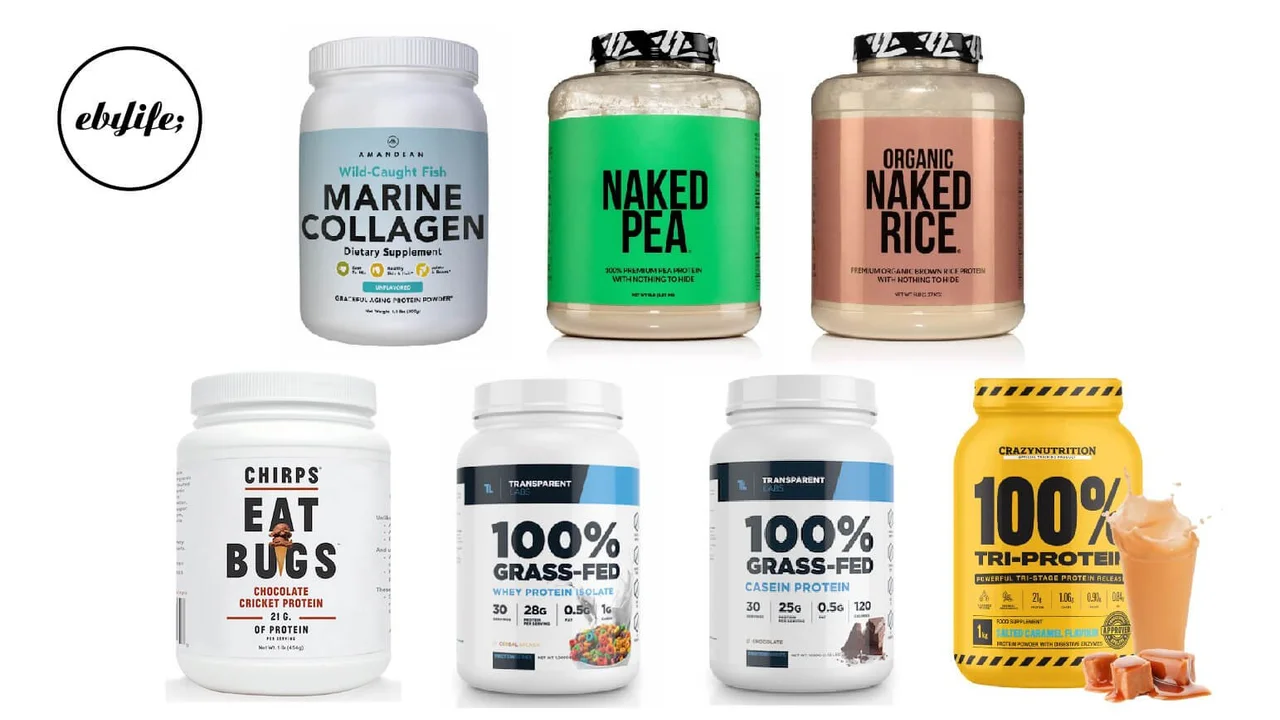7 Best Whey Protein Powders for Muscle Growth
Explore the differences between Creatine Monohydrate and Creatine HCL in terms of absorption, dosage, and potential side effects. Find out which type of creatine is right for your fitness goals.

Understanding Creatine What Is It and Why Use It
Okay, let's dive into the world of creatine. What exactly *is* it? Creatine is a naturally occurring compound found in muscle cells. Your body also produces it from amino acids, and you can get it from foods like red meat and fish. But for those looking to seriously boost their athletic performance, supplementation is often the way to go.
So, why use creatine? Well, it's primarily used to improve strength, power, and muscle size. It works by increasing the availability of ATP (adenosine triphosphate), which is your body's primary energy source during high-intensity activities like weightlifting or sprinting. More ATP means you can push harder for longer, leading to greater gains.
Creatine Monohydrate The Original Powerhouse
Creatine monohydrate is the most well-researched and widely used form of creatine. It's been around for decades, and countless studies have confirmed its effectiveness. It's also the most affordable option, making it a popular choice for beginners and experienced athletes alike.
How Creatine Monohydrate Works Absorption and Dosage
Creatine monohydrate works by increasing creatine stores in your muscles. To maximize these stores, many people start with a "loading phase," which involves taking a higher dose (typically 20 grams per day) for 5-7 days. This rapidly saturates your muscles with creatine. After the loading phase, you can switch to a maintenance dose of 3-5 grams per day to keep your creatine stores topped up.
The absorption of creatine monohydrate can be improved by taking it with carbohydrates or protein. This helps to spike insulin levels, which can facilitate creatine uptake into muscle cells.
Potential Side Effects of Creatine Monohydrate
While generally safe, creatine monohydrate can cause some side effects in certain individuals. The most common side effect is water retention, which can lead to a slight increase in body weight. Other potential side effects include stomach cramps, nausea, and diarrhea, although these are less common and often occur when taking large doses or on an empty stomach.
Creatine HCL The New Kid on the Block
Creatine HCL (hydrochloride) is a newer form of creatine that's gained popularity in recent years. It's created by bonding creatine to hydrochloric acid. The main selling point of creatine HCL is that it's more soluble in water than creatine monohydrate. This increased solubility is claimed to lead to better absorption and fewer side effects.
How Creatine HCL Works Absorption and Dosage
Because of its supposedly superior absorption, creatine HCL is often marketed as requiring a lower dose than creatine monohydrate. A typical dose of creatine HCL is 1-2 grams per day. The idea is that the increased solubility allows for more efficient uptake into muscle cells, eliminating the need for a loading phase.
Potential Side Effects of Creatine HCL
Creatine HCL is generally well-tolerated, and some users report fewer side effects (particularly water retention and stomach upset) compared to creatine monohydrate. However, it's important to note that research on creatine HCL is still limited, and more studies are needed to fully understand its long-term effects.
Creatine Monohydrate vs Creatine HCL A Detailed Comparison
Let's break down the key differences between these two forms of creatine:
- Absorption: Creatine HCL is claimed to be more soluble and therefore better absorbed. However, the difference in absorption may not be as significant as some manufacturers suggest. Some studies show similar results when comparing equal dosages.
- Dosage: Creatine HCL typically requires a lower dose (1-2 grams per day) compared to creatine monohydrate (3-5 grams per day for maintenance).
- Side Effects: Creatine HCL is often associated with fewer side effects, particularly water retention and stomach upset. However, this may vary from person to person.
- Price: Creatine monohydrate is significantly cheaper than creatine HCL.
- Research: Creatine monohydrate has a much more extensive body of research supporting its effectiveness and safety.
Which Creatine Is Right For You Choosing the Best Option for Your Needs
So, which creatine should you choose? Here's a simple guide:
- If you're on a budget: Creatine monohydrate is the clear winner. It's the most affordable and well-researched option.
- If you're concerned about water retention: Creatine HCL might be worth trying. Some users report less water retention with HCL.
- If you experience stomach upset with creatine monohydrate: Creatine HCL could be a good alternative, as it's often easier on the digestive system.
- If you want the most well-researched option: Creatine monohydrate is the way to go. It has decades of research supporting its effectiveness and safety.
- If you're willing to spend more for potentially better absorption: Creatine HCL might be a worthwhile investment, but keep in mind that the research is still limited.
Recommended Creatine Products and Their Uses
Here are a few specific product recommendations, covering both Creatine Monohydrate and Creatine HCL:
Creatine Monohydrate Products
- Optimum Nutrition Micronized Creatine Monohydrate: This is a classic choice and a best-seller. It's micronized for improved solubility and absorption.
- Use: Ideal for building strength and muscle mass.
- Scenario: Pre- or post-workout supplement.
- Price: Typically around $20-30 for a 300g container.
- BulkSupplements.com Creatine Monohydrate: A great option for those looking for a pure and affordable creatine monohydrate powder.
- Use: General creatine supplementation for improved performance.
- Scenario: Mix with water, juice, or a protein shake.
- Price: Usually around $15-25 for a 500g bag.
- Nutricost Creatine Monohydrate: Another solid, budget-friendly choice with good quality.
- Use: Enhancing athletic performance and muscle growth.
- Scenario: Take daily to maintain creatine levels.
- Price: Generally $18-28 for a 500g container.
Creatine HCL Products
- Kaged Muscle Creatine HCL: A popular choice for Creatine HCL, known for its purity and effectiveness.
- Use: Ideal for those seeking a more soluble creatine with potentially fewer side effects.
- Scenario: Pre-workout supplement.
- Price: Typically around $30-40 for a 75-serving container.
- Con-Cret Creatine HCL: One of the original Creatine HCL products, known for its concentrated formula.
- Use: Enhanced strength and power without water retention.
- Scenario: Take before training.
- Price: Usually around $25-35 for a 48-serving container.
- Transparent Labs Creatine HCL: A higher-end Creatine HCL product with a focus on quality and transparency.
- Use: Improving athletic performance and muscle growth with minimal side effects.
- Scenario: Mix with water or a pre-workout drink.
- Price: Generally $40-50 for a 30-serving container.
Creatine Usage Scenarios and Product Comparisons
Let's look at some specific scenarios and compare the products in those contexts:
- Scenario: Muscle Building on a Budget:
- Recommendation: Optimum Nutrition Micronized Creatine Monohydrate.
- Why: It's affordable, well-researched, and effective for building muscle mass.
- Comparison: While Creatine HCL might offer slightly better absorption, the cost difference makes monohydrate the better choice for budget-conscious individuals.
- Scenario: Minimizing Water Retention:
- Recommendation: Kaged Muscle Creatine HCL.
- Why: Creatine HCL is often associated with less water retention compared to monohydrate.
- Comparison: If water retention is a major concern, the higher price of HCL might be worth it. However, some users find that micronized monohydrate also minimizes water retention effectively.
- Scenario: Sensitive Stomach:
- Recommendation: Con-Cret Creatine HCL.
- Why: Creatine HCL is generally easier on the digestive system, reducing the risk of stomach upset.
- Comparison: If you've experienced stomach issues with monohydrate, switching to HCL could be a good solution. Start with a low dose and gradually increase it to assess your tolerance.
- Scenario: Maximizing Absorption:
- Recommendation: Transparent Labs Creatine HCL.
- Why: Transparent Labs focuses on high-quality ingredients and claims superior absorption.
- Comparison: While the research is still evolving, Transparent Labs' commitment to quality makes their Creatine HCL a worthwhile option for those prioritizing absorption.
Final Thoughts Choosing the Right Creatine for Your Fitness Journey
Ultimately, the best type of creatine for you depends on your individual needs, budget, and preferences. Creatine monohydrate is a proven and affordable option for most people. If you're concerned about water retention or stomach upset, creatine HCL might be a better choice. Remember to consult with a healthcare professional or registered dietitian before starting any new supplement regimen.
:max_bytes(150000):strip_icc()/277019-baked-pork-chops-with-cream-of-mushroom-soup-DDMFS-beauty-4x3-BG-7505-5762b731cf30447d9cbbbbbf387beafa.jpg)






